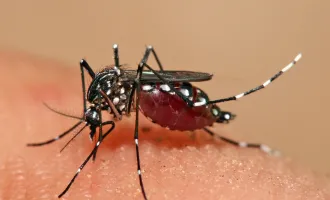Guru Atul Butte to head new UCSF computational institute
UCSF recently appointed Atul Butte director of the new Institute of Computational Health Sciences. Butte will move from his current position as chief of the Division of Systems Medicine at Stanford University.
His formal training in computer science as an undergraduate at Brown University—combined with an M.D., Ph.D.—make Butte a unique candidate for the job. His credentials are further bolstered by roles as an investigator at Stanford, a former software engineer at Apple and Microsoft, and a founder of multiple biotech startups.
The Institute of Computational Health Sciences began just four years ago. “The institute got started out of a initiative to try to expand bioinformatics and clinical informatics at UCSF,” said Katherine Pollard, a UCSF professor in biostatistics who became involved early on in the efforts to establish the nascent institute.
The institute’s recruitment subcommittee, chaired by Pollard, has already begun to partner with other departments to bring new computational faculty to UCSF. Eight new investigators have been recruited thus far, working in areas ranging from statistical genetics to high-throughput imaging and machine learning.
The institute has also started to examine how it can improve curriculum for UCSF students. “[We have been] surveying the landscape of teaching in the professional schools and the graduate schools for quantitative disciplines: where are things now, where should they be, where are the gaps,” said Pollard. “I hope [Dr. Butte] and the people he recruits will really expand the breadth and depth of the courses we can offer.”
Students also have hopes for new changes on campus. “I think what this institute will do is bring in some opportunities for more formal training on how to actually deal with big data, how to parse these huge data sets, [and] how to properly analyze them,” said Raul Torres, a fourth-year graduate student and computational biologist.
Beyond students, the institute and Butte have a vision of impacting all aspects of UCSF—from the bench, to the clinic, all the way to the patient. Its inception should help break down remaining silos separating basic science and clinical practice, hopefully leading to new breakthroughs for patients. As Pollard said, “From the point of view of the patients, I think Atul honestly really hopes to have an impact in that area. I think he would be disappointed if … in the five-year time frame things he and the people working in this institute were doing hadn’t changed practice in the hospitals.”
The institute’s founding is part of the effort by UCSF to take advantage of larger and larger data sets being generated by cheaper technology. As Torres said, “When I first became a graduate student a little over three-and-a-half years ago, we were talking about thousands of genomes. And now we’re talking about hundreds of thousands of genomes.” With this big data comes the possibility of learning information only available from large sample sizes, such as identifying rare genomic variants that contribute to diseases.
The institute already has begun to work toward these goals by teaming up with existing UCSF efforts to input patient-care data into a data warehouse. The warehouse will hold all of the electronic medical records and also provide information for people studying quality of care. Of course, data aggregation is only a start toward improved practices. The more difficult process will be sorting through the data to find meaningful trends that can improve patient outcomes and inform basic research.
With the arrival of Dr. Butte in April, the institute will be a step closer to coalescing its goals and making UCSF a pioneer in computational health practices. Pollard best summed up the anticipation of Butte’s arrival: “We’re really excited that Atul’s coming. Everybody from … the most basic scientist to the most applied-person working totally in the hospital could get behind him, and that’s really unique.”
Look out for an interview with Atul Butte in the Feb. 19 issue of the Synapse.


